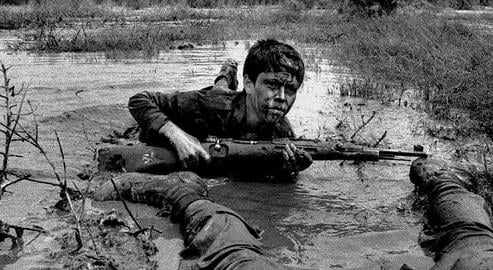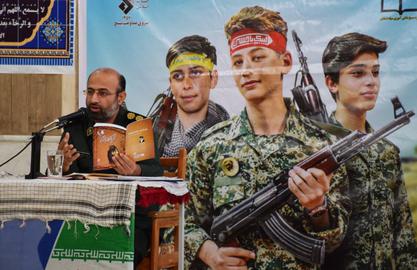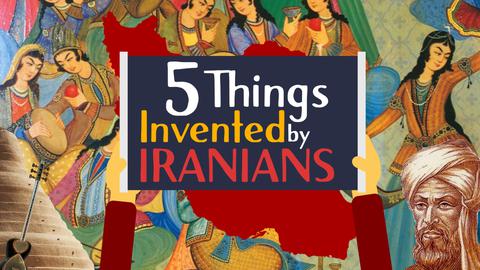Iran has a long history of using child soldiers to fight its wars. More than 30 years after the end of the Iran-Iraq war and 25 years since the Islamic Republic signed the United Nations Convention on the Rights of the Child, Iran continues to train child soldiers — sometimes even using them in its propaganda.
Iran’s practice of using children in conflict situations first came to light during the 1980-1988 Iran-Iraq war, when a boy known as Hossein Fahmideh, 13 years of age, left his home in Qom without the knowledge of his parents to defend the city of Khorramshahr against the Iraqi invasion. In October 1980, Fahmideh wrapped himself in a grenade belt, pulled out the pins and jumped under an Iraqi tank, killing himself and disabling the tank.
Hossein Fahmideh was declared a martyr for Islam, and the example he set was used to lure more children into war, kids who wanted to be heroes just like he was. During that war many children left their homes to join the fight, with or without permission from their parents. Military officers accepted them, seemingly without any qualms. At the time, they justified this using the argument that the situation was utterly desperate.
The war ended on August 20, 1988 and 17 years later, in early 1994, the Islamic Republic joined the Convention on the Rights of the Child, with the proviso that it could not violate Islamic or Iranian laws.
According to the statistics provided by the Foundation for the Preservation and Dissemination of the Values of the Sacred Defense — as Iranian officials refer to the war with Iraq — more than 22,000 underage students were killed during the eight years of the war [Persian link]. However, no statistics are available regarding children who have received military training from the Revolutionary Guards and its subsidiary, the paramilitary Students Basij organization. It is also not known how many of these children have been dispatched to Syria to fight in that country’s civil war, how many are waiting to be dispatched and how many have been killed as part of Iran’s defense of President Bashar al-Assad’s regime. Despite reports by human rights organizations about child soldiers sent to Syria, including by Human Rights Watch, the Iranian government has failed to issue any official statistics in this regard.
Children as Propaganda Tools
Children are used in the Islamic Republic’s propaganda campaigns, including in speeches by the Supreme Leader and in ceremonial parades such as marking Quds Day or the anniversary of the 1979 Islamic Revolution. Pro-regime media publish photographs of children carrying placards [Persian links] promoting Iran’s role in proxy wars.
According to both international laws and Iranian law, anybody under 18 years of age is considered to be a child and cannot legally be held accountable for breaking the law. And, according to the Optional Protocol on the Involvement of Children in Armed Conflict, “States will not recruit children under the age of 18 to send them to the battlefield” and “States will demobilize anyone under 18 conscripted or used in hostilities and will provide physical, psychological recovery services and help their social reintegration.” Also, “Armed groups distinct from the armed forces of a country should not, under any circumstances, recruit or use in hostilities anyone under 18.”
According to Provision 3 of Article 3 of this protocol, “State Parties that permit voluntary recruitment into their national armed forces under the age of 18 years shall maintain safeguards to ensure, as a minimum, that: (a) Such recruitment is genuinely voluntary; (b) Such recruitment is carried out with the informed consent of the person’s parents or legal guardians; (c) Such persons are fully informed of the duties involved in such military service.” But, since 2016, the parliament has been unable to sign the protocol due to opposition — especially from the Revolutionary Guards and the paramilitary Basij.
Islamic Republic Violates Its Commitments
Shirin Ebadi, the human rights lawyer and the 2003 winner of the Nobel Peace Prize, told IranWire that although Iran is a signatory of the Convention on the Rights of the Child, in practice it violates the convention whenever it wishes, and this has led to confusion among other signatories and in the United Nations.
“The government of Iran has joined the Convention on the Rights of the Child and has promised to act accordingly,” says Ebadi. “Of course, it joined the convention with the condition that it is not bound by its provisions if they go against Islam or Iranian laws. The UN has asked Iran to identify what provisions of the convention it does not accept. On the other hand, an approved interpretation of the convention holds that conditions that go against the basics of the convention are not acceptable. So the government of Iran must act according to the provisions of the convention and one of the most important principles of the convention is that the use of children in armed conflicts is banned in any shape or form.”
Referring to the practice of dressing children in military uniforms and making them march in military parades or carry placards in these parades, Ebadi says,“an important principle of the convention is that the children cannot be used for propaganda purposes because they are at an age that they cannot decide for themselves. It is possible that years later this child could feel unhappy that he had been dressed in the uniform of a military group — especially one that has been designated at the international level as a terrorist organization — and that his picture had been published everywhere. This treatment goes against the Convention on the Rights of the Child.”
Given the reactions of international organizations to this unlawful behavior, Ebadi says, “I am hopeful that UNICEF [the United Nations Children's Fund], will warn the government of Iran in this regard. But internationally, what will happen is that it will be registered as another case of the violation of children’s and human rights by the Iranian government.”
The Convention on the Rights of the Child went into effect on September 2, 1990, after the UN General Assembly approved it. As of now, 193 countries have joined the convention. But Iran’s decision to join has been tainted by its continued attempts to ignore provisions that it deems to be going against Islamic principles or Iranian laws.
The Nine-Year Wait for Parliament
The General Assembly adopted the Optional Protocol to the Convention on the Rights of the Child concerning the involvement of children in armed conflict on May 25 , 2000, and it went into force on February 12, 2002. In 2010, Iranian Foreign Minister Ali Akbar Salehi signed the protocol without fanfare during a trip to New York to participate in the UN General Assembly. But it took five years, until 2016, for President Hassan Rouhani’s government to present it to the parliament for its approval. Immediately afterward, however, institutions including the Revolutionary Guards and the Basij Organization, and hardliner media such as the daily Kayhan and news agencies Fars and Tasnim, rose up in opposition. Today, the parliament has yet to approve the protocol.
“Although Iran has signed the child soldier treaty outlawing the use of children under the age of 18 to participate in hostilities, its government has yet to ratify it in parliament,” says Child Soldiers International. And in November 2017, Human Rights Watch reported on a video featuring the logo of the Islamic Republic of Iran Broadcasting (IRIB) that showed an Iranian boy serving as a child soldier in Syria. The boy describes himself as a “defender of the shrine” — an expression used by Iran’s government to refer to the soldiers it deploys to Syria and Iraq.
Is there anything that international organizations can do to prevent Iran from recruiting child soldiers? “Unfortunately, nothing can be done except issuing statements,” said Musa Barzin Khalifehlou, a lawyer and IranWire’s legal counselor [Persian link]. “This a domestic crime and, as yet, there is no international authority to prosecute domestic crimes. Unfortunately, Iran is not a member of the International Criminal Court and cannot be tried by this tribunal. The United Nations and human rights commissions can prepare reports in this regard and order Iran to answer but, legally speaking, nothing else can be done.”
Related Coverage:
Iran Violates the Rights of Afghans by Sending them to War, March 19, 2019
US Accuses Iran of War Crimes, November 14, 2018
Iran’s Teenage Afghan Fighters, August 25, 2018
Revolutionary Guards Deny Using Child Soldiers, September 14, 2017
The Lost Youth of Iran's Child Soldiers, July 21, 2017
visit the accountability section
In this section of Iran Wire, you can contact the officials and launch your campaign for various problems


























comments